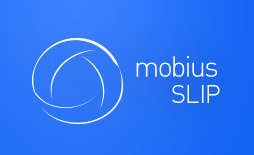| Section 1194.22 Web-based Internet information and applications – Detail VPAT™ Voluntary Product Accessibility Template® |
| Criteria |
Level of Support and Supporting Features |
Remarks and Explanations |
| (a) A text equivalent for every non-text element shall be provided (e.g., via “alt”, “longdesc”, or in element content). |
Supports with exceptions |
All relevant system images in the application have text equivalents. Diagrams and controls that have an equivalent tabulated text representation use alt=””. Decorative images use alt=””. All text in the icons used in the student interface is unique and identifies which object the action applies to. Exceptions: Some text in the icons in the instructor interface is not unique. Users control their own content. Therefore, the content of the files attached or referenced by users through URL may include visual data without equivalent text or audio representation. Users have the option to download files. |
| (b) Equivalent alternatives for any multimedia presentation shall be synchronized with the presentation. |
Supports with exceptions |
The application interface does not use built-in multimedia presentations. Exceptions: Users control their own content and are responsible for ensuring its accessibility. |
| (c) Web pages shall be designed so that all information conveyed with color is also available without color, for example from context or markup. |
Supports |
Color is used to differentiate warning and information/confirmation messages. The text of the messages clearly differentiates them as well. Tool menus and tabs use color/highlighting to indicate current location. This data is also communicated by headings and selected states. |
| (d) Documents shall be organized so they are readable without requiring an associated style sheet. |
Supports |
Style sheets are only used in visual design. A user or screen reader can read pages with the associated style sheets disabled. Pages use logical HTML structures to ensure navigability when style sheets are disabled (headings, contextualized unique links, table headings and summaries, logical tab order and focus). |
| (e) Redundant text links shall be provided for each active region of a server-side image map. |
Not applicable |
The application does not use server-side image maps. |
| (f) Client-side image maps shall be provided instead of server-side image maps except where the regions cannot be defined with an available geometric shape. |
Not applicable |
The application does not use server-side image maps. |
| (g) Row and column headers shall be identified for data tables. |
Supports |
Data tables, such as the list of assignments and their due dates in the Course Summary page, are labeled with informative column and row headers. |
| (h) Markup shall be used to associate data cells and header cells for data tables that have two or more logical levels of row or column headers. |
Not applicable |
The application has no data tables with two or more logical levels of row or column headers. |
| (i) Frames shall be titled with text that facilitates frame identification and navigation. |
Not applicable |
The application does not use frames. |
| (j) Pages shall be designed to avoid causing the screen to flicker with a frequency greater than 2 Hz and lower than 55 Hz. |
Not applicable |
The application does not cause the screen to flicker with a frequency greater than 2 Hz and lower than 55 Hz. |
| (k) A text-only page, with equivalent information or functionality, shall be provided to make a web site comply with the provisions of this part, when compliance cannot be accomplished in any other way. The content of the text-only page shall be updated whenever the primary page changes. |
Supports |
Accessibility features are integrated into the standard application interface; a text-only version is unnecessary. |
| (l) When pages utilize scripting languages to display content, or to create interface elements, the information provided by the script shall be identified with functional text that can be read by Assistive Technology. |
Supports |
The application uses javascript, WAI-ARIA and the most modern HTML5 technology to provide feedback from interactive elements and to allow Assistive Technology, such as screen readers, to render information back to the user. |
| (m) When a web page requires that an applet, plug-in or other application be present on the client system to interpret page content, the page must provide a link to a plug-in or applet that complies with §1194.21(a) through (l). |
Supports |
The application does not require any applet or plug-in to work with its default functionality. Users can upload their own multimedia content using Flash, but if users do not have Flash installed on their computer, they will be prompted with a link to download Flash. |
| (n) When electronic forms are designed to be completed on-line, the form shall allow people using Assistive Technology to access the information, field elements, and functionality required for completion and submission of the form, including all directions and cues. |
Supports |
All forms in the application are accessible by keyboard and assistive technologies (such as Microsoft Narrator, Chrome Vox, JAWS, NVDA or VoiceOver). Users are warned when a link opens in a new window. |
| (o) A method shall be provided that permits users to skip repetitive navigation links. |
Supports |
The application also uses semantic HTML5 elements, such as “nav”, “aside” and “footer”, as well as ARIA landmark roles, such as “navigation”, “complementary”, “main” and “contentinfo” to cue Assistive Technology. |
| (p) When a timed response is required, the user shall be alerted and given sufficient time to indicate more time is required. |
Supports |
For all timed responses users are alerted by email in advance of the deadline. Deadline calendar can be exported as an iCalendar file to another calendar client to set up the alerts. |


